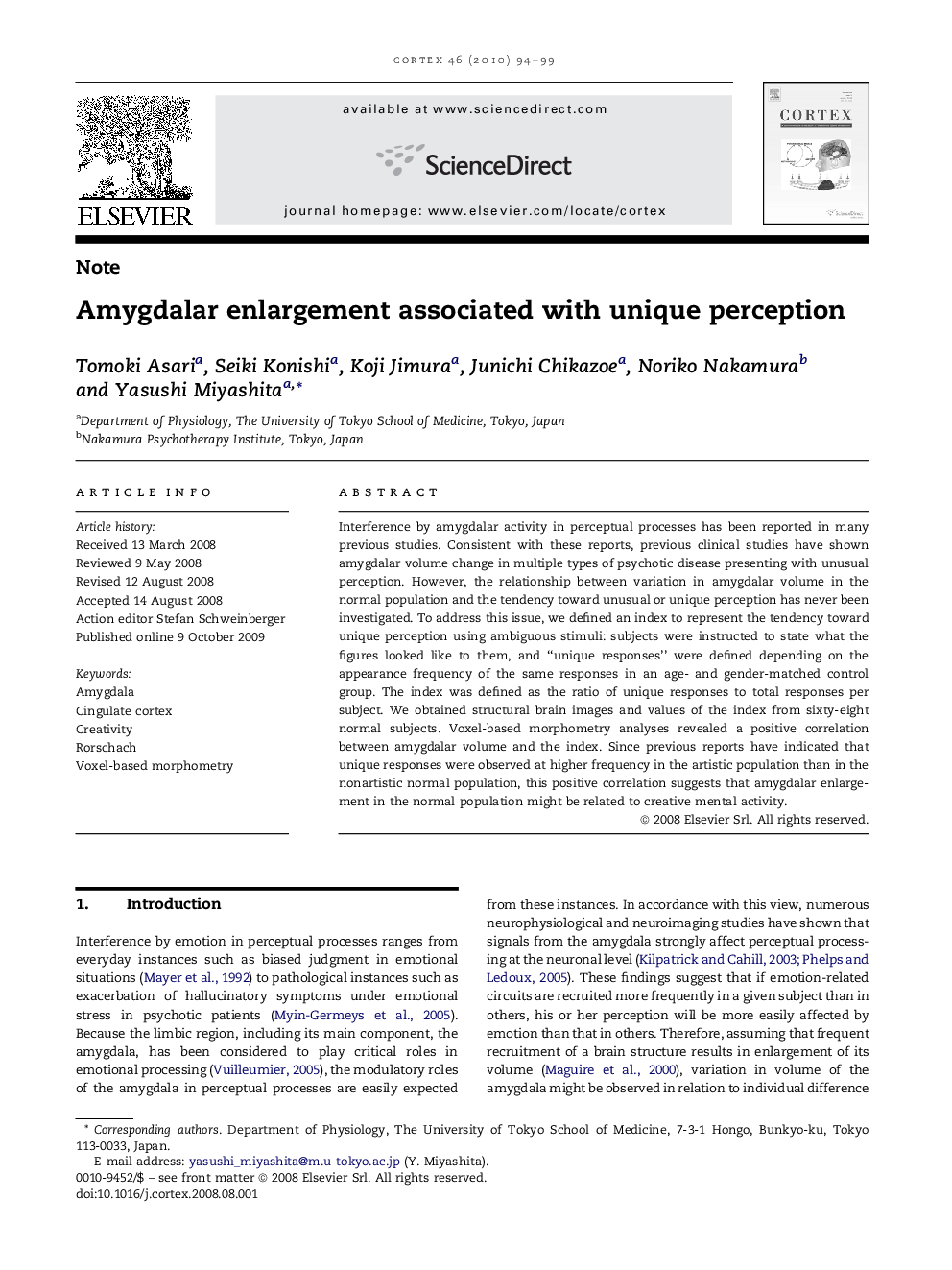| Article ID | Journal | Published Year | Pages | File Type |
|---|---|---|---|---|
| 942384 | Cortex | 2010 | 6 Pages |
Interference by amygdalar activity in perceptual processes has been reported in many previous studies. Consistent with these reports, previous clinical studies have shown amygdalar volume change in multiple types of psychotic disease presenting with unusual perception. However, the relationship between variation in amygdalar volume in the normal population and the tendency toward unusual or unique perception has never been investigated. To address this issue, we defined an index to represent the tendency toward unique perception using ambiguous stimuli: subjects were instructed to state what the figures looked like to them, and “unique responses” were defined depending on the appearance frequency of the same responses in an age- and gender-matched control group. The index was defined as the ratio of unique responses to total responses per subject. We obtained structural brain images and values of the index from sixty-eight normal subjects. Voxel-based morphometry analyses revealed a positive correlation between amygdalar volume and the index. Since previous reports have indicated that unique responses were observed at higher frequency in the artistic population than in the nonartistic normal population, this positive correlation suggests that amygdalar enlargement in the normal population might be related to creative mental activity.
